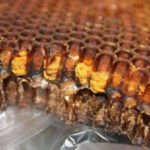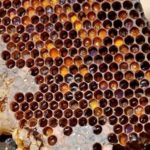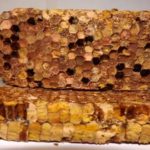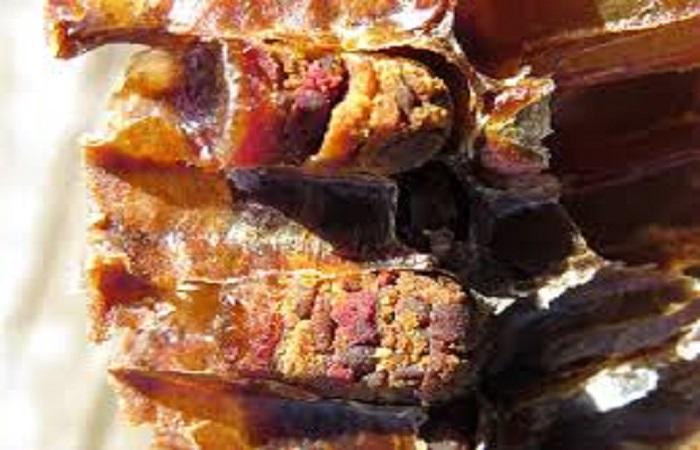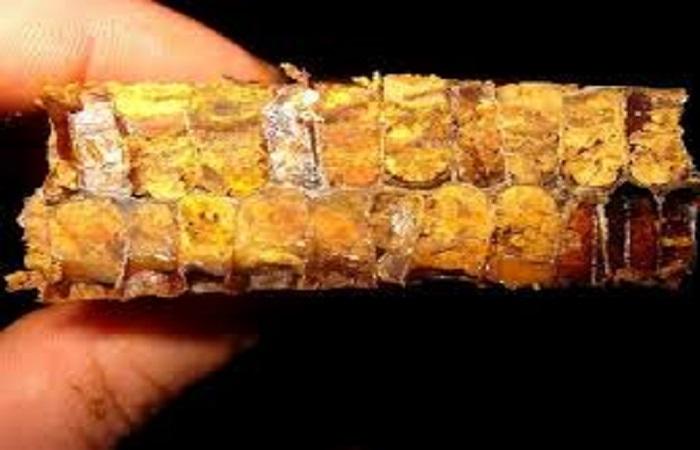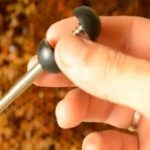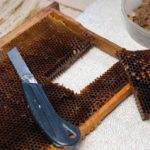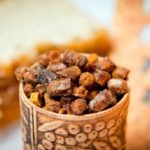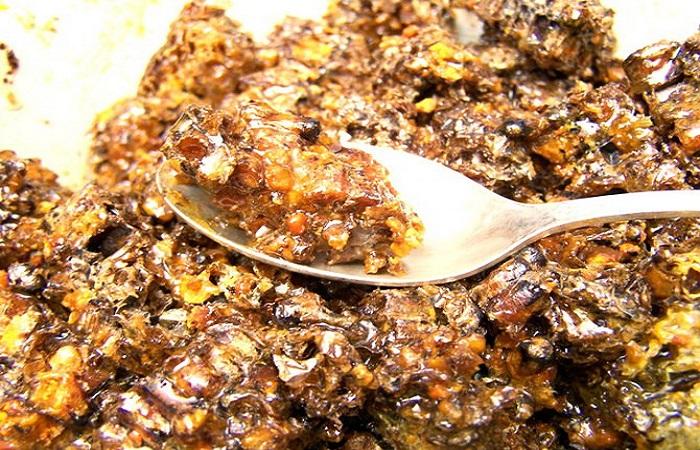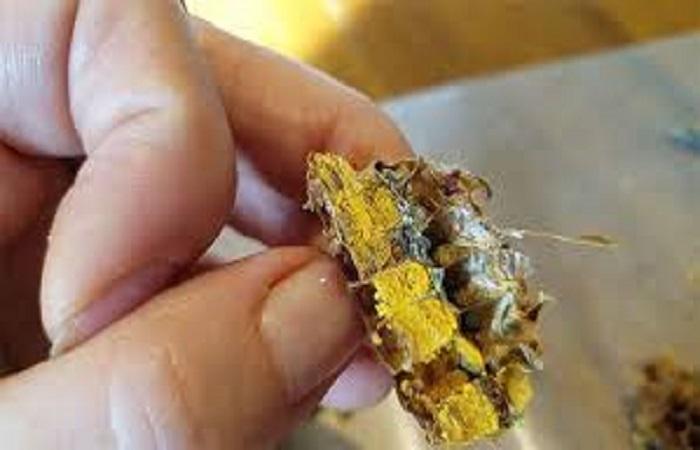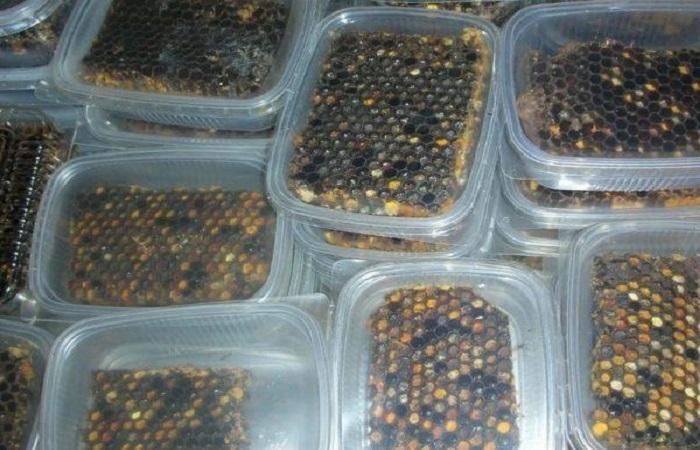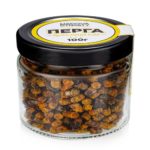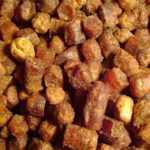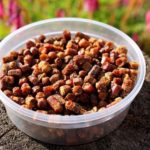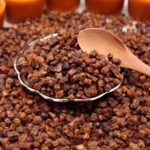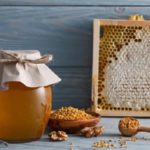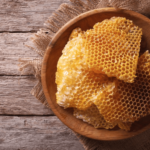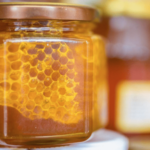Traditional medicine for centuries uses bee products for treatment, including bee bread in honeycombs. Observant people have noticed that beekeepers and those who eat their products are distinguished by good health and longevity. These remedies also help with a number of diseases, especially colds or those associated with severe weakening of the body, exhaustion, retardation in physical development, and weight loss.
What is bee bread and what does it look like?
Bee bread is a protein food that bees collect to feed their offspring. It is pollen, that is, pollen collected by insects from flowering plants.They bring it to the hive, carefully compacting it into the cells of the honeycomb.
Honey and a layer of wax are used on top for preservation. As a result of fermentation in a sealed cell, lactic acid is produced, which serves as a preservative. Ready-made bee bread is a nutritious product that the bee colony feeds its offspring.
It looks like small lumps of irregular shape, colored in the color of pollen of a particular plant or group of them, and has a characteristic taste, reminiscent of fresh rye bread. This property, as well as the use of bees as food for larvae, gave the popular name to the product - “bee bread”.
It differs from pollen in its sterility and nutritional value, which is 3 times higher. It is also 3 times superior to pollen in antibiotic qualities.
Varieties
Depending on the type of beebread pollen used, there are:
- Monofloral. Pollen for it is collected from one plant variety, for example, rapeseed or sunflower. It has a uniform color of cells and stalks, a pronounced taste - bitter or sour.
- Polyfloral, obtained from many different flowers. It is heterogeneous in color, but over time, by autumn it becomes monochromatic. The taste is harmonious, combines bitter, sour and sweet without being cloying.
By type of finished product it can be as follows:
| Variety | Characteristics and properties | Flaws |
| In the honeycomb | It is considered the most natural and high quality.
Content in honeycombs – 50-80% |
It is poorly stored, it becomes moldy at high humidity, and when the storage temperature increases, it is eaten by wax moths.
Most often, beebread is extracted from old honeycombs that contain merva - the shell of cocoons. |
| In paste | It is obtained by grinding honeycomb honey with the addition of honey, which plays the role of a preservative and dietary supplement.
Content – 30-40% |
Well kept. It is almost impossible to accurately determine the percentage of bee bread content, as well as additives. The mixture looks unaesthetic and is not suitable for those who are allergic to honey |
| In granules | The cleanest option. Most often obtained by freezing honeycombs, it consists of hexagonal-shaped granules following the outlines of the honeycomb. Supplied cleaned of mortar, wax honeycomb residues, and other contaminants. Contains the maximum amount of bee bread | Costs more than other varieties |
The product is found in hundreds of variations, since its composition depends on which plants the bees collected the pollen from.
How to get beebread out of honeycombs?
To obtain clean beebread from honeycombs, the following methods are used:
- Soak. Pour water for 1-2 hours, shake, separate the product, dry.
- Vacuuming. Special equipment is used.
- Freezing. A simple method, but it loses useful components.
- Drying. The honeycombs are dried, cooled, and the wax honeycombs are removed.
How to use it
Bee bread in honeycombs is a supply of nutrients for bee larvae during the cold season. It contains many biologically active components, therefore it has a positive effect on human health. Only natural bee bread is suitable for prevention and treatment, so you need to choose it especially carefully.
It is best to use clean beebread in the combs.To do this, cut a small piece from a large piece and chew it like chewing gum. Healing substances released under the influence of saliva are absorbed into the blood and have a stimulating, supportive and therapeutic effect. The remaining lump of wax must be spat out.
Chewing bee bread in honeycombs 3-4 times a day is used in case of problems with the digestive organs (cirrhosis, hepatitis, cholecystitis), dysfunction of the thyroid gland, in the presence of type 2 diabetes, as well as in case of exhaustion and weakening of the body, in the postoperative period, for accelerating the healing of wounds and ulcers, strengthening the immune system and antimicrobial therapy.
Of all beekeeping products, only bee bread is not an allergen. Therefore, it can be used by children (except infants), pregnant women, and older people. It can thin the blood; this property should be taken into account by patients prone to such a disorder. Beebread is also a powerful stimulant, so it is used no later than 3-4 hours before going to bed.
Storage rules
Bee bread stored in honeycombs at home is poorly stored, so for this purpose you need to select the best pieces, tightly sealed with wax. Ideally, the product is stored under the following conditions:
- Air humidity is within 20-30%. If its level is higher, the honeycombs will become moldy; if the level is lower, they will dry out.
- Temperature range +1…+5 degrees Celsius. At higher temperatures, moths will appear in the product; with significant cooling, irreversible changes in the composition will appear.
It is best to store bee bread in honeycombs in a dark, dry room, protected from temperature changes and foreign odors. You can also keep it in the refrigerator with constant monitoring of indicators, filling the honeycomb with powdered sugar or pouring honey, but the last two options are not suitable for those who monitor their sugar levels or are allergic to honey.
You can place beebread in honeycombs in dry glass jars that are tightly closed with lids. However, they also need to be placed in a place out of reach of sunlight, cool and with stable humidity.

